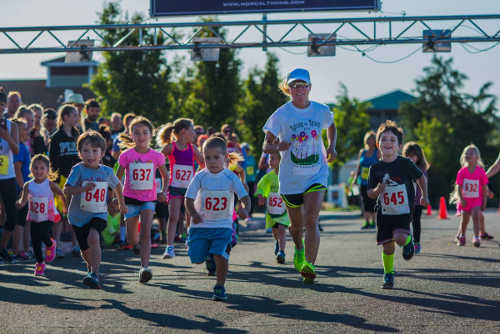- Elizabeth Larson
- Posted On
West Coast salmon season dates set
SACRAMENTO – The Pacific Fishery Management Council on Tuesday adopted ocean salmon season recommendations that provide recreational and commercial opportunities for most of the Pacific Coast.
However, due to low forecasts, several areas are closed this year, and the open areas are significantly constrained.
The adopted salmon fisheries off the coasts of California, Oregon, and Washington do achieve conservation goals for the numerous individual salmon stocks on the West Coast..
The recommendation will be forwarded to the National Marine Fisheries Service for approval by May 1, 2017.
“It has been another challenging year for the Council, its advisors, fishery stakeholders and the public as we strive to balance fishing opportunities on harvestable stocks of Chinook and coho with the severe conservation needs we are facing on salmon stocks, both north and south of Cape Falcon,” said Council Executive Director Chuck Tracy. “The Council has recommended commercial and recreational ocean salmon seasons in Washington, Oregon, and California this year that provide important protections for stocks of concern including Klamath River fall Chinook, Washington coastal coho, and Puget Sound Chinook.”
“We have made the tough decisions and implemented fishery restrictions to protect salmon stocks while providing at least some opportunity for commercial recreational, and tribal ocean salmon fishing along much of the west coast,” said Council Chair Herb Pollard.
Washington and Northern Oregon (north of Cape Falcon)
Fisheries north of Cape Falcon (near Nehalem in northern Oregon) depend largely on Columbia River Chinook and coho stocks. Columbia River fall Chinook returns are expected to be healthy in 2017, and Columbia River coho are expected to return at reduced but moderate levels in 2017.
However, some coastal Washington and Puget Sound coho abundance is reduced from recent years, and some wild coho stocks are expected to return at very low levels.
In response, the Council has been challenged with shaping fisheries to provide access to relatively abundant Chinook stocks while protecting natural coho populations.
North of Cape Falcon, there is an overall non-Indian total allowable catch of 90,000 Chinook coastwide (compared to 70,000 last year) and 42,000 marked hatchery coho in (compared to 18,900 last year).
Recreational fisheries
The recreational fishery north of Cape Falcon does not include a mark-selective Chinook season this year, but opens to all salmon on June 24 in most areas (July 1in Westport) and ends Sept. 4 or when Chinook or coho quotas are reached.
Recreational fisheries in all port areas will have access to 45,000 Chinook (compared to 35,000 Chinook last year), and a marked coho quota of 42,000 (compared to 18,900 last year). For details, please see the season descriptions on the council Web site at www.pcouncil.org .
Commercial fisheries
Tribal and non-Indian ocean commercial fisheries are designed to provide harvest opportunity on strong Chinook returns primarily destined for the Columbia River while avoiding coho stocks of concern.
Coho retention is allowed in commercial fisheries north of Cape Falcon this year, which is an improvement over the non-retention regulations from last year; however, the coho quotas are very low in 2017.
Non-Indian ocean commercial fisheries north of Cape Falcon include traditional, but reduced, Chinook seasons in the spring (May-June) and summer season (intermittent openings during July through September).
The Chinook quota of 27,000 in the spring is greater than the 2016 quota of 19,100. The summer season quotas include 18,000 Chinook and 5,600 coho.
Tribal ocean fisheries north of Cape Falcon are similar in structure to past years, with quotas that include 40,000 Chinook and 12,500 coho.
California and Oregon south of Cape Falcon, Oregon
Fisheries south of Cape Falcon (in northern Oregon) are limited by the need to protect Klamath River fall Chinook, and south of Point Arena (in northern California), they are also affected by the need to protect Sacramento River winter Chinook.
Returns of spawning Klamath River fall Chinook are projected to be the lowest on record in 2017 due to drought, disease, poor ocean conditions, and other issues. At the same time, the Council must protect Sacramento River winter Chinook, which are listed under the Endangered Species Act.
Because both of these fish intermix with other stocks in the ocean, fisheries targeting more abundant stocks must be constrained.
Recreational fisheries
Recreational fisheries off the central Oregon coast will allow Chinook retention from March 15 through October 31.
Coho fisheries consist of a mark-selective quota fishery of 18,000 in mid-summer (compared to 26,000 last year) and a non-mark-selective quota fishery of 6,000 in September (compared to 7,500 last year), both open from Cape Falcon to Humbug Mountain.
The Brookings/Crescent City/Eureka areas are closed for the entire season to conserve Klamath River fall Chinook, which are most abundant in these areas. Fisheries further south all opened on April 1.
In the Fort Bragg area, the season will close during June, July, and half of August, then reopen through Nov. 12.
In the San Francisco area, the season will close during the first half of May and reopen through October 31. Salmon fishing will remain open through July 15 in the Monterey Bay area and through May 31 for areas south of Monterey Bay.
Commercial fisheries
Commercial fisheries from Cape Falcon to the Florence South Jetty, Oregon open on April 15 and will run through July 31 with intermittent closures to reduce impacts on Klamath fall Chinook. This area will also be open in September and October.
Fisheries from the Florence South Jetty to Horse Mountain, California will be closed for the entire season to reduce impacts on Klamath River fall Chinook.
Between Horse Mountain and Point Arena (in the Fort Bragg area), there will be a 3,000 Chinook quota ocean fishery during the month of September, after 2017 Klamath River fall Chinook spawners have entered the Klamath River.
In the area from Point Arena to Pigeon Point (San Francisco), the season will be open for most of August and all of September. From Pigeon Point to the Mexico border (Monterey), the Chinook season will be open in May and June.
There will also be a season from Point Reyes to Point San Pedro (subset of the San Francisco area), open October 2 to 6 and October 9 to 13.
Management process
The council developed the management measures after several weeks spent reviewing three season alternatives.
The review process included input by Federal state, and tribal fishery scientists and fishing industry members; public testimony, and three public hearings in coastal communities.
The council received additional scientific information and took public testimony at its April Council meeting before taking final action. The decision will be forwarded to the National Marine Fisheries Service for approval and implementation.
In addition, the coastal states will decide on compatible state waters fishery regulations at their respective Commission hearings.
Council role
The Pacific Fishery Management Council is one of eight regional fishery management councils established by the Magnuson Fishery Conservation and Management Act of 1976 for the purpose of managing fisheries 3-200 miles offshore of the United States of America coastline.
The Pacific Council recommends management measures for fisheries off the coasts of California, Oregon and Washington.

 How to resolve AdBlock issue?
How to resolve AdBlock issue? 








